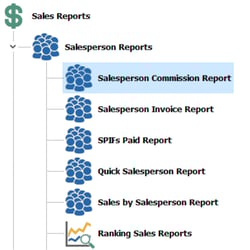Easy-to-Calculate Commission Plans That Really Motivate

Your company’s commission structure is a critical piece of your sales organization. How you pay your sales reps not only affects your profitability, but can also help you to attract and retain top sales talent.
Whether your business has a commission-only structure or a base salary plus commission, you’ll need to decide how to set your commission rates.
Here are a few sales commission options to consider, and how you can decide best for your team.
Commission Paid as a Percentage of Selling Price
Probably the most popular model is the revenue commission model, which is widely used for companies selling products with set price points.
For example, if the sales rep sells a $1,000 service, they get 10% in commission, or $100.
It’s simple to understand and execute for reps and company leaders alike. Paying reps based on the revenue they bring in ensures that top sales performers are also the highest paid.
Commission Paid as a Percentage of Profit
A variation of paying a revenue-based commission is the gross margin commission model, which takes into account the expenses associated with the products you sell. Rather than earning a percentage of the revenue they bring in, sales reps earn a percentage of the profit.
For example, if you sell a product for $1,000 and there are $600 worth of expenses related to the sale of that product, then the rep would earn a percentage of the remaining $400.
This model ensures that every sales transaction supports the company’s bottom line. Reps who rely on discounting to close deals have less of an incentive to do so, which prevents profit erosion.
Related Article: Are Your Prices UNSAFE?
Since commission is linked directly to the price your customer pays, offering a discount will reduce their own paycheck. This encourages your reps to sell the products with the highest profit margins — a win/win for the company and the rep.
Commission Paid as a Percentage of Selling Price - Base Price
Similar to the gross margin commission concept, calculating commission as a percentage of selling price minus a base price can also help to protect the company's bottom line.
For example, if you sell a product for $1,000 and it has a base price of $800, then the rep would earn a percentage of the $200 difference.
This model is handy to help enforce pricing in states that have minimum markup laws in place and instances where manufacturers have a floor price enabled to prevent unfair pricing in the marketplace.
How to Choose Your Sales Compensation Model

The best sales commission plan is the one that drives your sales reps to perform their best, and make you money at the same time.
How much are your top sales reps earning versus your low producers? Are your top performers leaving for a higher paying sales job? If so, you might not be providing enough monetary incentive.
Incentives Drive Behavior
Plug in real numbers using each model you’re considering and look at the outcome.
- Does the compensation seem fair?
- Is it easy for the sales rep to track and understand?
- Does the commission structure allow you to remain profitable?
- Will you gain a competitive advantage in your industry that will attract top sales talent?
One of the biggest considerations when outlining your sales commission structure is how money drives behavior. Your commission model should support company objectives so that sales reps are clear on what their priorities should be.
Sales Commission Support in Windward System Five on Cloud
 Employees whose salaries are based on a commission structure depend on a system that accurately reports their transactions. They work hard for those commissions (and other incentives), and they should be paid accordingly.
Employees whose salaries are based on a commission structure depend on a system that accurately reports their transactions. They work hard for those commissions (and other incentives), and they should be paid accordingly.
Windward's business management solution tracks commissions, salesperson incentive funds (SPIFs) and other compensation plans for your sales team. The best part is that reps can track their own commissions with a few clicks instead of wasting time doing manual calculations, or distracting whomever is in charge of payroll with a dispute.
Plus, if more than one employee helps with a particular transaction, it’s possible to split the commission to reward multiple contributors. In other instances, sales reps might be assigned specific clients, in which case the two can be linked.
However you decide to compensate your team, Windward System Five on Cloud can provide the tools you need to easily track and get those commissions paid.
Already a client?
You have resources available to you.
This topic can be found on the Windward Software Wiki. You can also use searchable self-help, and there are courses available in the Windward Learning Academy.
|
Please consider subscribing to your YouTube Channel for Solution Series |
 |












